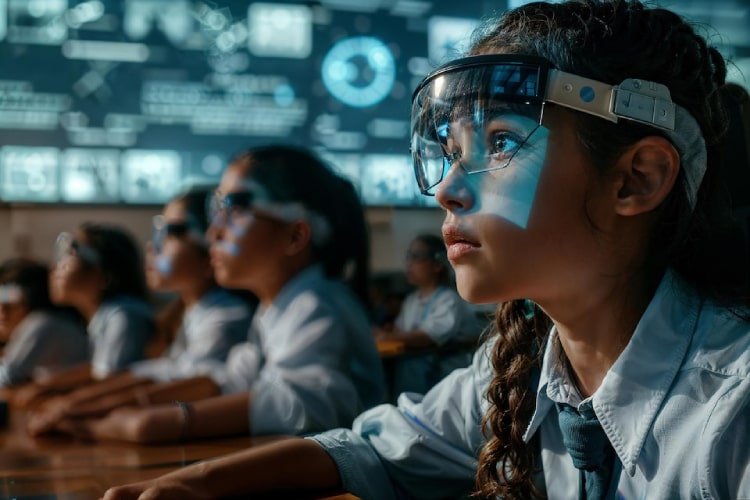These Are the Magnificent Ways Through Which Virtual Avatars Assist Students Stay Concerned in the Classroom

Introduction
Virtual avatars have changed classroom dynamics as far as interaction learning is concerned. They create interactive and quite engaging experiences in classrooms. Virtual representations allow a student and teacher to be in a shared space creating the feel of presence and connection. Virtual avatars facilitate the online or hybrid classroom experience of mimicking the actual learning environments. They bridge distance in terms of collaboration, personalized learning experiences, and inclusiveness in education. This blog will detail all the ways these virtual avatars keep students engaged while shaping their educational outcomes.
What are Virtual Avatars in Education?
Virtual avatars are digital replications of people that can interact with one another in a virtual or augmented environment. From appearance to emotions and actions, these avatars can be made to resemble a user and serve as an effective means of communication and collaboration. Beyond other things, avatars allow students to actively participate in virtual classrooms, simulations, or role-playing scenarios. Online learning tools do not often include these items in any of their formats. From gamified lessons to virtual study groups, avatars can be projected as one of the essential items in advanced learning.
Examples of Types of Avatars in Classrooms
Animated characters in gamified platforms or realistic avatars in a VR environment are few examples.
Functions of an Educational Avatar
These include real-time interactions, customizable designs, and link ability to different learning areas.
How Modern Technology Can Converge through Virtual Avatars into Student Learning
Virtual avatars not only allow learning to be a lot more active and entertaining, it promotes active participation. Imagine students representing themselves as avatars to engage in historical events, to develop solutions for actual problems, or to come up with different products: all this bring forth from passive consumer to active knowledge seeker and adds value to reflecting critically and working collaboratively at the end of the task. Besides, avatars allow shy or introverted students to express themselves more freely in virtual settings and hence increase their confidence and orientation.
Embodiment of Historical Figured Actions in Scola
Students can become historical figures, scientists, or artists to better grasp another perspective.
Hibernating Group Activity Boost
Avatars offer the possibility of joint and creative activity even from dispersed settings.
Making Learning Inclusive with Virtual Avatars
That Provide the Most Important Benefits Virtual Avatars-they might simply make the most considerable possible learning environment inclusive. Students with disabilities or some students who find it difficult to connect due to social barriers can enjoy the presence of avatars as they engage in lessons. An example of that is where there is a virtual classroom that can be navigated by an avatar, involving the participation of a student with mobility challenges. Such avatars are ideal for leveling the playing field for students from diverse cultural or linguistic backgrounds. They engage in neutral, customized environments where they would be able to interact.
Breaking Down Physical Barriers.
Accesses an immersive experience for the disabled due to mobility or health problems.
Establishing a Cultural Contact.
Students can meet virtually and communicate with other students around the world through avatars.
Future Possibilities for Virtual Avatars in Education
Advancing technology seems to be a complement for the evolving and ever-expanding modalities of using virtual avatars in education. The avatars will be much more than virtual, well-researched, peer-based tutors adapted to the learning needs of every pupil by introducing individualized learning experiences. Avatars will integrate into gamified platforms and subsequently into real-life immersive narrative lessons that could make some of the heavy topics lighter and more fun to learn. Furthermore, avatars will contribute a lot in virtual reality classrooms to develop highly interactive and collaborative learning environments.
AI-Powered Virtual Tutors
Avatars will provide individualized information, query responses, and instructional aid assisted by artificial intelligence.
With the Future of VR and AR:
The coming educational experience will merge the avatars, the VR, and the AR for a completely immersive learning environment.
Conclusion
The introduction of virtual avatars in classrooms today has altered and transformed classroom learning into a more interactive and exciting experience. These make it possible for students to engage actively with peers in an environment free from social or physical barriers to learning. Such developments change as the technology keeps advancing and constantly provide fresh ways to develop appropriate dynamic learning environments for all students. The classroom of the future digitally equipped, and avatars are leading ahead.
